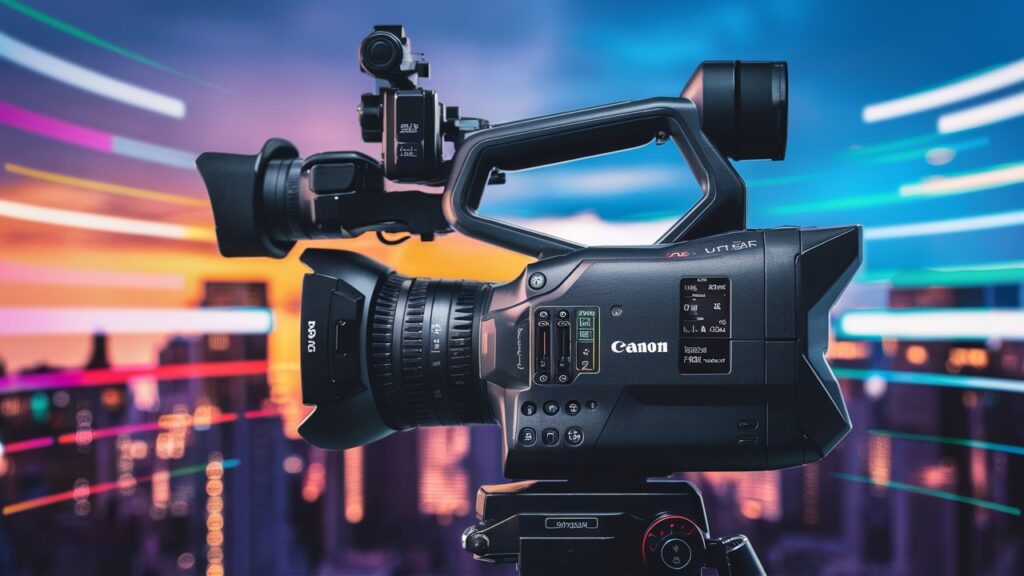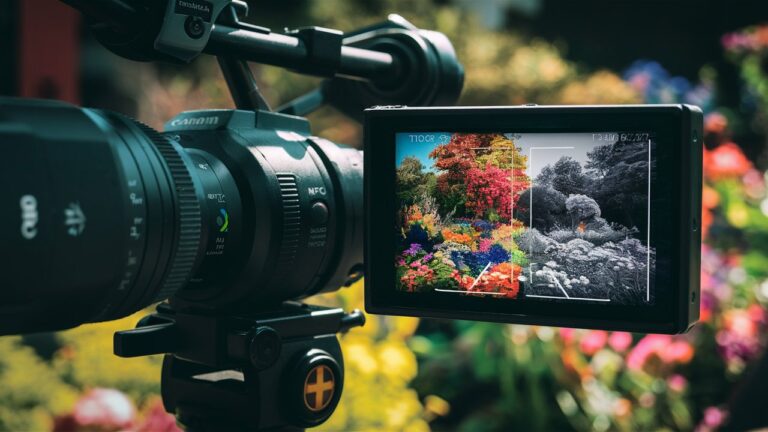Introduction: The Critical Role of Color Control in Modern Production
In the high-stakes world of professional video production, live broadcasting, and dynamic content creation, color consistency and accuracy are non-negotiable elements of visual storytelling. Achieving this across multiple cameras, especially in fast-paced environments, presents a significant technical challenge. Enter the Canon RC-IP1000 Advanced PTZ Controller, a sophisticated hardware solution engineered to streamline not just camera movement but also critical image parameters. This article explores how this broadcast-grade controller transforms color management workflows, enabling real-time adjustments that elevate production quality and reduce post-production burdens. By integrating direct access to color settings within an intuitive interface, the RC-IP1000 empowers operators to maintain visual fidelity across complex multi-camera setups, ensuring every frame meets professional standards 411.
1. Direct Color Adjustment Capabilities: Precision at Your Fingertips
The Canon RC-IP1000 transcends basic PTZ (Pan-Tilt-Zoom) functionality by offering granular control over core color parameters. Through its 7-inch touchscreen interface and strategically placed physical dials, operators can adjust white balance, brightness, contrast, and gain directly from the controller without accessing individual camera menus or external software. This capability is indispensable during live events where lighting conditions shift unpredictably—such as concerts transitioning between dramatic stage lighting or corporate presenters moving across differently lit stages. The ergonomic layout of 42 buttons and 14 customizable dials ensures frequently used color functions are instantly accessible, minimizing reaction time during high-pressure productions. By enabling these adjustments across up to 200 connected cameras (via IP) or five via serial connection, the RC-IP1000 eliminates the need for on-the-fly software-based grading, maintaining workflow continuity 4810.
2. Workflow Integration: Bridging Hardware Control and Software Precision
While the RC-IP1000 excels at real-time adjustments, its role extends into advanced color-matching workflows through integration with Canon’s specialized software. The Camera Color Matching Application (a free Windows tool unveiled in early 2025) complements the controller by automating 3D LUT generation for matching colors between Canon CR-N700 PTZ cameras and non-Canon cinema or broadcast cameras. Here’s how the synergy works:
- Capture: Shoot a standard color chart using the primary reference camera and the CR-N700.
- Generate: The software analyzes color differences and creates a corrective 3D LUT.
- Apply: Upload the LUT to compatible Canon cameras *via the RC-IP1000*, which then applies it during live output.
Though the application itself runs on a PC, the controller acts as the central deployment hub, allowing LUTs to be managed across grouped cameras simultaneously. This is revolutionary for multi-camera shoots blending different manufacturers’ systems—common in sports broadcasts or hybrid studio setups—ensuring seamless color continuity without manual grading expertise 6.
3. Interface and Usability: Designing for Operational Efficiency
At the heart of the RC-IP1000’s color management prowess is its user-centric interface, designed to minimize cognitive load during complex productions. The high-resolution 7-inch touchscreen displays live camera feeds in customizable 2×2 or 3×3 grids, allowing operators to visually compare color across shots while making adjustments. Physical controls include:

- Assignable dials: Map color parameters (e.g., R/G gain, master black) to dedicated knobs for tactile control.
- Touch focus with exposure feedback: Tapping the screen to set focus also activates exposure tools like the Focus Guide, which visually indicates optimal exposure alongside depth of field.
- Simultaneous multi-camera adjustments: Apply white balance or contrast changes to an entire camera group (up to 20 groups of 10 cameras) with one command, critical for maintaining uniformity during live switches 81011.
For broadcast engineers, the inclusion of 12G-SDI/HDMI video outputs allows external monitoring of color-corrected feeds on calibrated reference displays. Additionally, tally light integration via GPIO ensures color adjustments align with program/preview switching contexts 915.
4. Limitations and Strategic Workarounds
While powerful, the RC-IP1000 has boundaries demanding strategic planning:
- No built-in LUT generation: Unlike dedicated switchers or software, the controller applies but does not create LUTs. Canon’s Camera Color Matching Application fills this gap but requires a PC.
- Camera compatibility: Advanced features like Touch AF exposure feedback require Canon CR-N500/700 series cameras or compatible camcorders (e.g., EOS C300 Mark III) with Dual Pixel AF.
- Complex grading limitations: Primary corrections (WB, contrast) are handled efficiently, but secondary grading (isolating hues, curves) necessitates post-production tools.
For demanding cinematic workflows, pairing the RC-IP1000 with Canon’s Auto Tracking Application proves advantageous. This add-on uses AI to track subjects consistently, allowing the controller to maintain stable color on moving targets—essential for lecture halls or theatrical performances 1115.
5. Real-World Applications: Where Color Control Matters Most
The RC-IP1000’s color tools shine in high-volume, live-to-air environments:
- Live Sports: Rapidly match colors across 10+ cameras in a stadium as natural light fades.
- Broadcast Studios: Maintain skin-tone consistency under mixed LED/incandescent lighting during talk shows.
- House of Worship Streaming: Group balcony, stage, and podium cameras to apply uniform warmth for evening services.
- Corporate Hybrid Events: Sync colors between PTZ cameras and DSLRs capturing presenters and slides.
Testimonials highlight reduced post-production time by 30–50% for live recordings, thanks to in-shot consistency. For automated workflows, the Auto Loop Application lets PTZs execute pre-programmed movements with locked color settings, freeing operators for creative switching 4911.
Conclusion: A New Era of Integrated Color Workflows
The Canon RC-IP1000 Advanced PTZ Controller redefines on-the-fly color management for broadcast and live production environments. By merging direct parameter control, LUT deployment, and multi-camera grouping into a single hardware interface, Canon addresses the persistent challenge of visual cohesion in complex shoots. Though not a replacement for DaVinci Resolve in post, it drastically reduces the need for corrective grading in live scenarios or tight-turnaround projects. As hybrid production grows, tools like the RC-IP1000—with its ergonomic design, scalability to 200 cameras, and software integration—will become central to delivering broadcast-grade color effortlessly. For studios, OB trucks, and worship venues alike, this controller isn’t just about moving cameras—it’s about ensuring every frame tells a consistent, compelling story 4811.
Frequently Asked Questions (FAQs)
- Can the RC-IP1000 adjust white balance during a live broadcast?
Yes, operators can adjust white balance, gain, and offset in real time using the controller’s dials or touchscreen, with changes applicable to individual cameras or synchronized groups 415. - Does it support LUTs for cinematic color matching?
While it cannot generate 3D LUTs, it stores and applies LUTs created in Canon’s Camera Color Matching Application or third-party tools, ensuring match with cinema cameras 611. - How many cameras can share identical color settings?
Up to 10 cameras per group (20 groups total) can receive simultaneous adjustments, ideal for large venues 915. - Is the controller compatible with non-Canon cameras?
Color adjustments via hardware dials work only with supported Canon PTZs and camcorders. However, its LUT application can match colors from non-Canon cameras using the Color Matching Application 611. - Can I monitor scopes (waveform, vectorscope) on the RC-IP1000?
No, the touchscreen displays live feeds and menus only. External monitoring via SDI/HDMI to a scope-enabled monitor is recommended 810.
